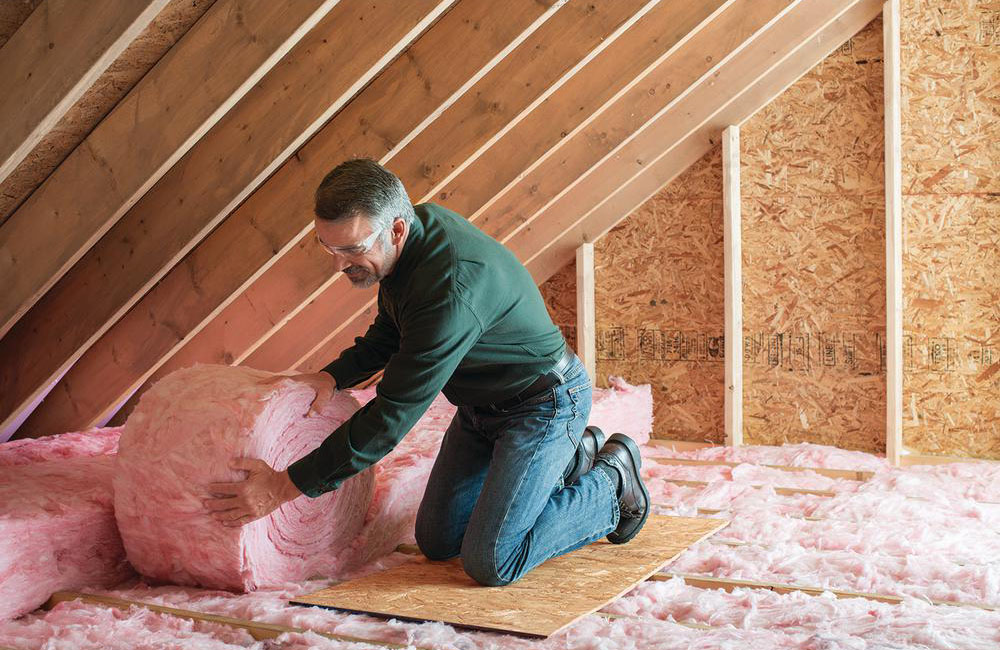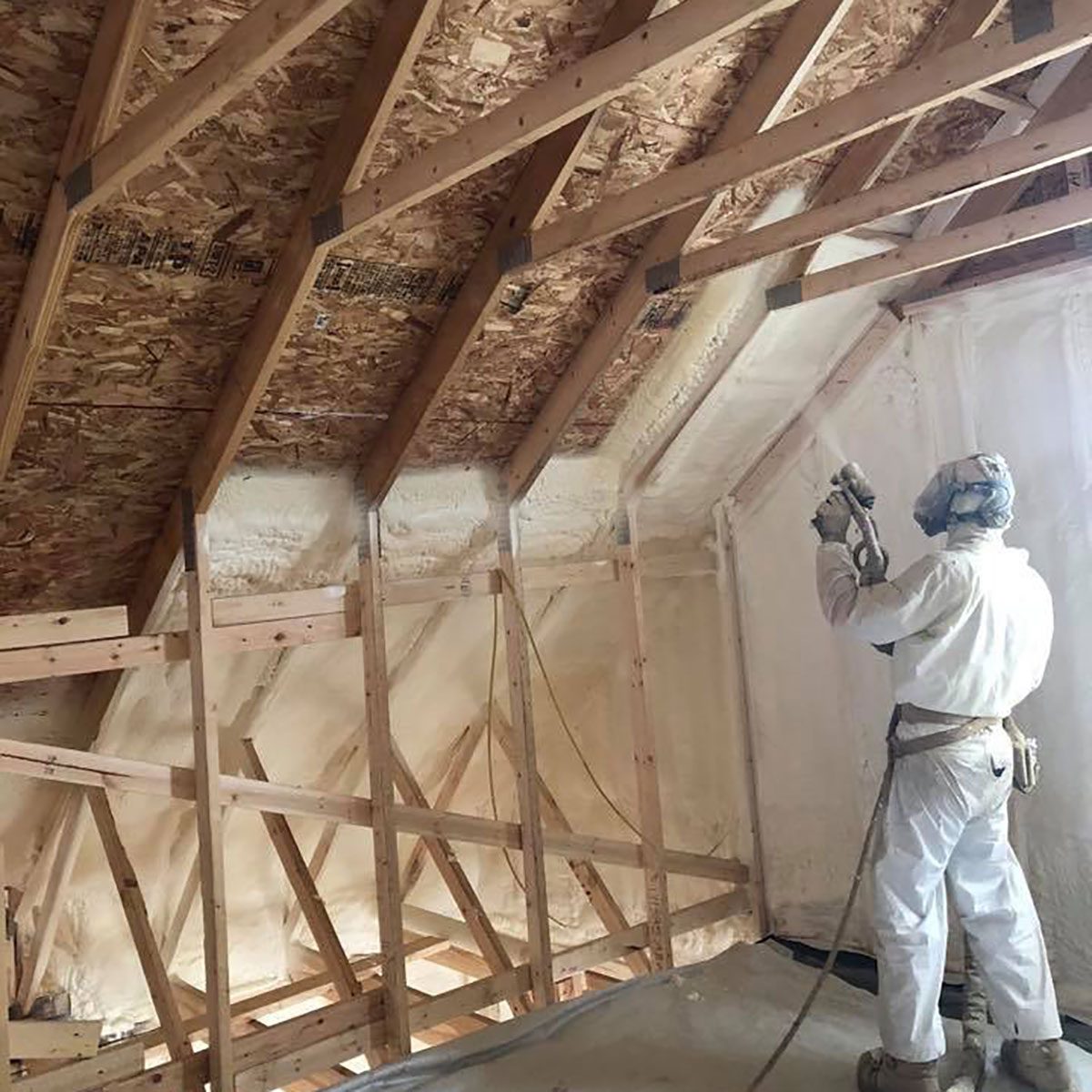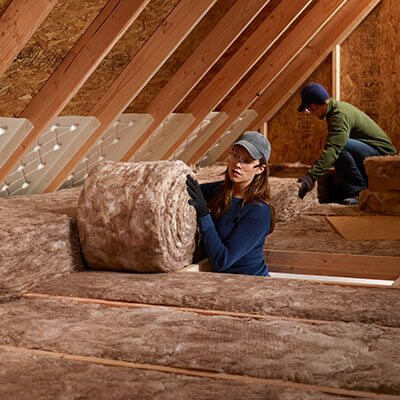How Attic Insulation DFW Can Transform Your Home's Environment Control
How Attic Insulation DFW Can Transform Your Home's Environment Control
Blog Article
Discover the Various Kinds Of Attic Insulation and Their Unique Benefits for Your Home's Power Performance

Fiberglass Insulation
Fiberglass insulation is one of the most frequently made use of products for attic room insulation because of its exceptional thermal efficiency and cost-effectiveness. Made up of little glass fibers, this product properly traps air, developing a protecting barrier that assists keep regular interior temperature levels. Its high R-value per inch makes it specifically effective at resisting warmth transfer, which is vital for power conservation in homes.
Setup of fiberglass insulation is reasonably uncomplicated, commonly readily available in batts or loose-fill forms, accommodating numerous attic room setups. Furthermore, it is non-combustible and resistant to moisture, decreasing the danger of mold development. This durability adds to its longevity, making fiberglass a viable lasting investment for homeowners.
Furthermore, fiberglass insulation is typically made from recycled materials, which improves its eco-friendliness. The material can likewise add to soundproofing, reducing sound transfer between rooms. While it is important to wear protective equipment throughout setup to prevent irritability from the fibers, the general benefits of fiberglass insulation, including energy savings and ecological considerations, make it a preferred selection for enhancing attic room performance and advertising a comfortable living setting.
Spray Foam Insulation
Spray foam insulation is a very reliable option for attic insulation, known for its superior air sealing and thermal efficiency. This cutting-edge insulation material is made up of a mixture of isocyanate and polyol resin, which, when combined, expands rapidly to load gaps and tooth cavities in the attic room. Its capability to adhere to different surface areas makes certain a continuous barrier against air leaks, substantially lowering warm loss throughout cooler months and warmth gain throughout warmer periods.
One of the vital benefits of spray foam insulation is its high R-value per inch, which implies it offers excellent thermal resistance in a relatively slim application. This is particularly advantageous in attic rooms where area is commonly restricted. In addition, spray foam can aid decrease wetness buildup, minimizing the risk of mold and mildew and mildew growth, which can be detrimental to both the structure and indoor air high quality.
While the preliminary cost of spray foam insulation might be greater than conventional options, its long-term energy financial savings, combined with enhanced convenience and enhanced home value, make it a rewarding financial investment for house owners seeking enhanced energy effectiveness. Attic Insulation DFW. On the whole, spray foam insulation sticks out as an efficient solution for maximizing attic room insulation
Cellulose Insulation

Cellulose insulation is a popular choice for attic insulation, largely made up of recycled paper items treated with fire retardants. This environmentally friendly choice is known for its excellent thermal efficiency, effectively lowering heat transfer in both summer and cold weather. The thick composition of cellulose enables it to load spaces and voids in attic rooms, providing a smooth barrier versus air leaks.
One of the considerable advantages of cellulose insulation is its capacity to withstand mold and mildew and pests, owing to the fire resistant treatments made use of during manufacturing. Furthermore, it flaunts a high R-value per inch, which equates right into superior energy effectiveness. House owners can expect reduced cooling and heating costs as a result of improved insulation.
Setup is commonly accomplished via blowing loosened cellulose into the preferred location, enabling for a quick and reliable process. This method also lessens interruption to the existing framework. Additionally, cellulose insulation has a reasonably low environmental influence, as its production process makes use of recycled materials, adding to sustainable structure techniques.
Rock Woollen Insulation
Among the different choices for attic room insulation, rock woollen, likewise referred to as mineral wool, attracts attention as a result of its excellent thermal and acoustic efficiency. Made from recycled or all-natural products, rock wool is created by thawing rock and rotating it right into fibers, resulting in an item that offers superb insulation properties.
Among the significant advantages of rock wool insulation is its high R-value, which shows its performance in standing up to heat circulation. This characteristic not only boosts power efficiency however additionally contributes to maintaining a comfortable indoor temperature year-round. Furthermore, rock woollen is inherently fireproof, making it a much safer alternative for homes as it can endure high temperature levels without melting or releasing harmful fumes.
In addition, rock wool insulation succeeds in soundproofing capacities, properly reducing noise transmission between areas and from outdoors resources. Generally, rock wool insulation gives a thorough service for enhancing energy performance, safety, and convenience in domestic settings.
Radiant Obstacle Insulation
Glowing barrier insulation works as an efficient option for minimizing warm transfer in attics, particularly in warmer climates. This kind of insulation works by showing radiant warm away from living spaces, consequently minimizing the quantity of heat that enters a home during heat - Attic Insulation DFW. Usually composed of an extremely reflective material, such as aluminum foil, glowing barriers are installed in attics, encountering the roof, where they can obstruct inbound warm from the sunlight
The main benefit of glowing barrier insulation is its ability to reduced air conditioning costs. By reflecting heat rather than absorbing it, radiant obstacles can help keep an extra secure indoor temperature level, minimizing the work on cooling systems. This effectiveness converts right into lower power expenses and enhanced convenience for house owners.
Along try this site with energy savings, radiant barriers can additionally add to boosted interior air top quality. By minimizing heat build-up, they help minimize humidity degrees, which can avoid mold growth and enhance general air blood circulation. When installed appropriately, radiant barrier insulation can be an invaluable enhancement to any kind Continued of energy-efficient home, making it a deserving consideration for property owners looking to improve their attic room insulation approach.
Verdict
In final thought, comprehending the various kinds of attic insulation-- fiberglass, spray foam, cellulose, rock wool, and radiant barriers-- makes it possible for home owners to make educated decisions concerning power effectiveness. By choosing the appropriate insulation product, substantial reductions in energy prices can be achieved, along with improvements in indoor convenience.

In final thought, comprehending the different additional hints types of attic room insulation-- fiberglass, spray foam, cellulose, rock woollen, and radiant barriers-- enables homeowners to make informed decisions pertaining to energy performance.
Report this page